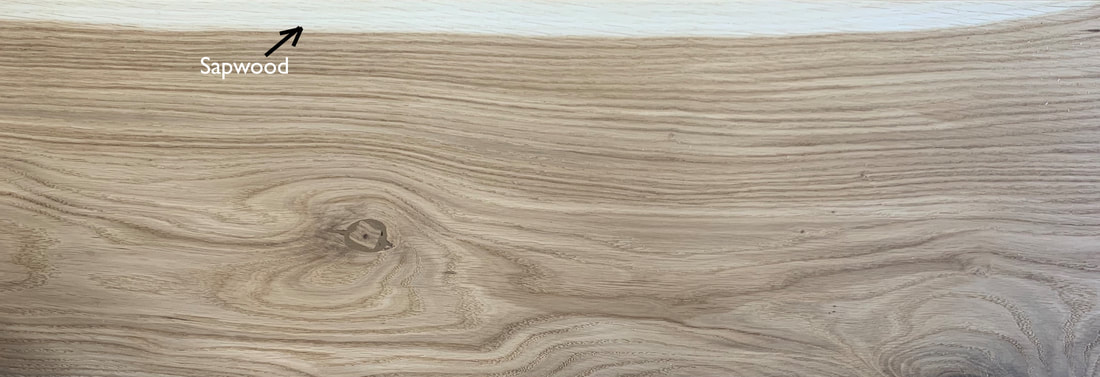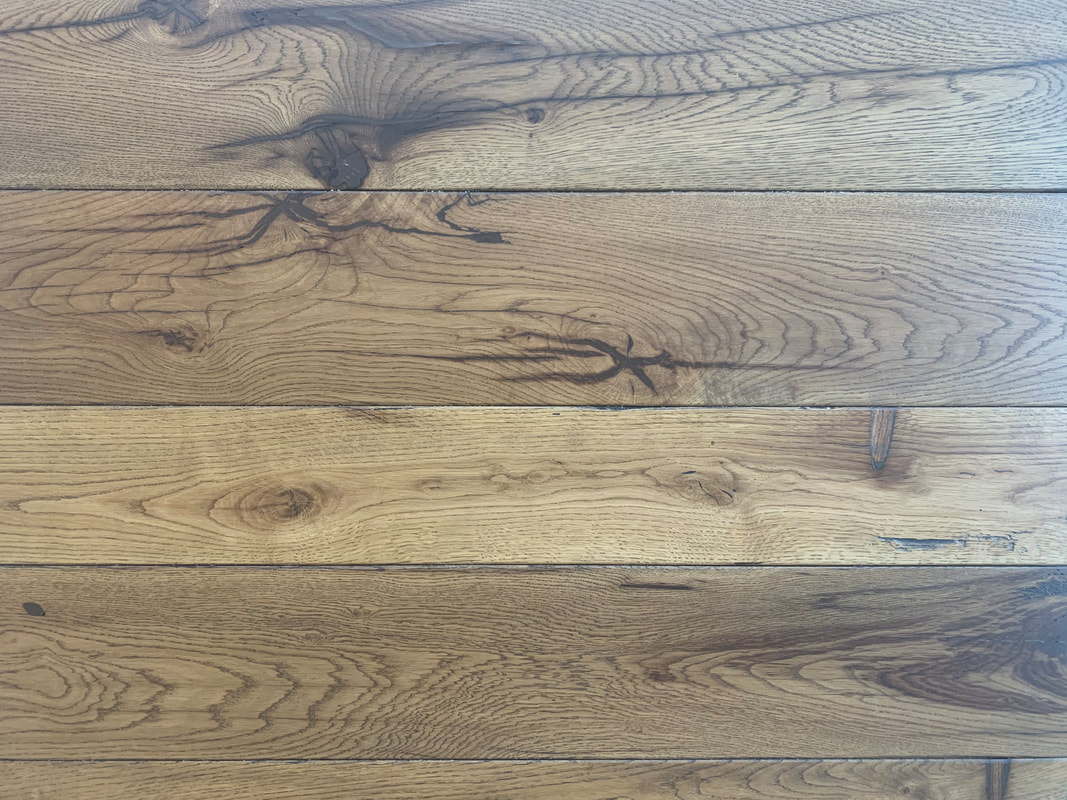|
Wood is a truly fascinating material – each surface reveals insights into the story of the tree from which it came. Every tree took a unique journey, and evidence remains in the grains and features that we can enjoy as we gaze upon the wood! Oak is one of the most popular hardwoods used to create wood flooring, and an excellent choice for examining these features, as we cultivate a greater understanding of the markings that we spot on spectacular hardwood floors. For some, distinctive colour variations and markings such as checks, medullary rays, and knots, can be viewed as imperfections. For others, these irregularities are prized features that give the wood greater character and interest. An understanding of these markings can allow us to better appreciate the glorious detail of our oak wood flooring. Here, we will explore the definitions and stories behind these features. As to whether you choose a grade of wood with or without such markings for your own oak flooring project – that remains a choice that is entirely yours! Sapwoods When felling a tree to create wood flooring, or indeed any wooden product, it is as if that tree trunk holds two entirely different kinds of wood. These are known as sapwood, and heartwood. Over time, as that tree grew, the outermost portion of the trunk was live and active – with sap and water flowing through it, allowing the tree to grow. As the tree grew taller, and the trunk thicker, new sapwood formed and old sapwood dried and darkened – creating the sturdy, structural heartwood of the tree. The majority of hardwood flooring features mostly heartwood, although some makes use of the bold colour difference between the sapwood and the hardwood to stunning effect. The relative paleness of the sapwood can be brought out further using various wood treatment techniques. This allows floor makers to create striking and beautiful contrast oak flooring. Many different wood species feature high contrast sapwood and heartwood, of varying proportion. Contrasting panels within parquetry designs can also be brought to life using these two types of wood. Knots Knots are a common and entirely natural feature found in oak, and many other types of timber. During the lifespan of a tree, some young branches will be damaged, or die back. In these moments, the bases of the now-lost branch remain, as if scar tissue within the body of the tree. As the tree grows wider, the grain simply takes a path around the forming knot. This creates the beautiful sweeping shapes that can be seen on the surface of many types of oak wood flooring. Again, it is possible to create oak flooring without the appearance of knots, but this means carefully selecting choice pieces that do not contain this feature. Simply, whether or not such markings are preferred is a case of personal taste! Medullary Rays This rather romantic name does perfect justice to these beautiful and unusual markings. Often to be found on high quality oak flooring, the sight of medullary rays will give you a clue that the wood in question is no less than highly desirable quarter sawn oak. Medullary rays are what remains of cells within the once-live wood that ran at a perpendicular angle to the grain. These cells performed an essential function in transporting the nutrients of the tree. Quarter sawing produces the strongest grade of oak, as it cuts directly across the grain. This reveals the medullary rays, which appear as pale, almost luminescent streaks upon the surface. As the oak is polished, oiled, varnished, or smoked, these distinctive markings become more pronounced in vivid but delicate contrast. The use of this feature in oak wood flooring can be applied to glorious effect! Shakes
Shakes are cracks that appear in the surface of the wood, commonly due to the way the wood is seasoned after it is felled, but at times they can be attributed to growing conditions - particularly extreme cold. Substantial shakes can render wood unusable, while smaller shakes can sometimes serve as alluring features. Shake marks are defined depending on the line in which they formed. “Star” shakes are formed when splits run from the exterior of the wood towards it's heart, along the medullary rays. “Heart” shakes do quite the opposite – this was when cracks began right in the centre of the heartwood, due to shrinkage in the interior. “Cup” shakes perform differently again, creating splits between annual growth rings. If such a crack extends around the full diameter of the growth ring, this is referred to as a “Ring” shake. Frost is often attributed in the case of this type of shake. The forming of shakes as the wood is seasoned can be minimised through careful regulation of the temperature and moisture levels to which the wood is exposed, until it's seasoning is complete, and it is ready to be transformed into beautiful oak wood flooring! Checks Checks are another kind of crack that forms within the wood as it is seasoned. As the surface of the wood dries, stresses can build up when the wood reacts unevenly to moisture loss. This causes the wood's fibres to split apart. Oak checking can vary from tiny hair-line cracks that create compelling patterning, to substantial cracks that may impact the woods workability. Checking is not always present in the surface of seasoned oak, but when it does appear, it serves as an intriguing reminder of the fascinating journey that the wood has taken from sapling, to mighty oak, to spectacular oak flooring.
1 Comment
2/18/2021 11:21:45 pm
Different kinds of wood for our houses. These woods are different from each other from the texture, the color and the design. This information about woods is very helpful.
Reply
Leave a Reply. |
- Home
-
Collections
- Timeless - Engineered Wood Flooring
- Solid Wood Flooring
- Chevron Parquet Flooring
- Parquet
- Wide Plank Wood Floor
- Live Edge Wood Flooring
- Engineered Ash Wood Floor
- Engineered Walnut Wood Floor
- Textured Wood Flooring
- Versailles Parquet
- Parquet Panels
- Mansion Weave Parquet
- Antique Wood Flooring
- Wood Cladding
- Charred Wood
- Wood For Stairs
- Unfinished Wood Flooring >
- Bespoke Wood Floor
- Services
- Information
- Room Ideas
- BLOG
- Contact
- FAQ
- Trade Program
|
|
|
UNIQUE BESPOKE WOOD
74/76 MONTROSE TERRACE, EDINBURGH, EH7 5DP
UNITED KIGDOM
[email protected] / 01316529873
74/76 MONTROSE TERRACE, EDINBURGH, EH7 5DP
UNITED KIGDOM
[email protected] / 01316529873
FOLLOW US ON SOCIAL MEDIA
© COPYRIGHT 2022. ALL RIGHTS RESERVED.




 RSS Feed
RSS Feed